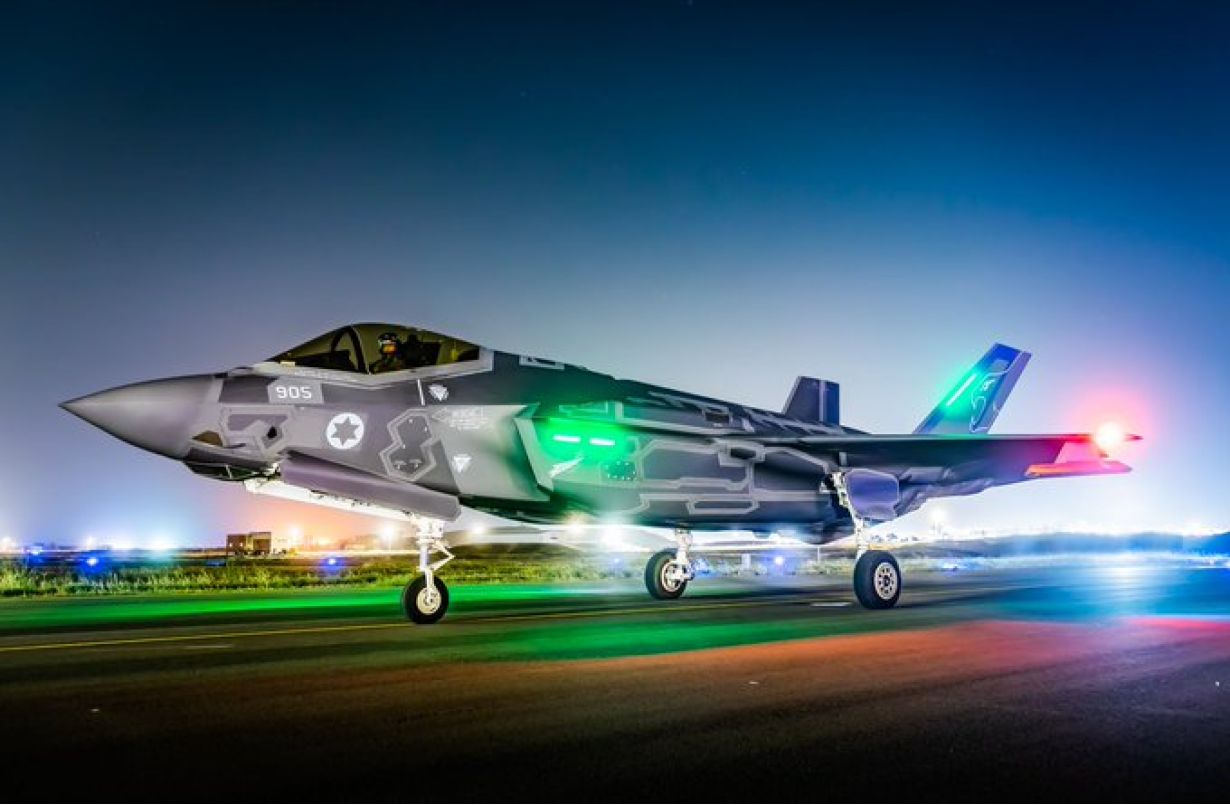One of Israel’s F-35 stealth fighter jets was forced to land at a base in the south of the country after colliding with a bird during an Independence Day flyby on April 26.
The Israeli Defense Forces (IDF) have confirmed that the F-35 fighter jet was indeed struck by a bird, causing only “minor damage.”
The pilot was unharmed, and an emergency landing was not required. The plane landed safely at an airbase in the Negev region, as confirmed by the military.
The IDF did not disclose any specific information regarding the nature of the damage caused by the bird strike on the F-35 fighter jet, which cost over $80 million.
This was the second instance where an Israeli Air Force aircraft participating in a flypast had to abandon its mission and descend to the ground.
During an Independence Day flyby, an attack helicopter withdrew from the mission and landed on open ground near Kibbutz Ga’ash in the central part of the country.
The military stated that the Apache helicopter made the landing because of a technical issue, and fortunately, no injuries were reported in this incident.
In celebration of the 75th Independence Day, more than 100 aircraft were part of a series of fly-bys. The displays took place across the country and included participation from foreign air forces, with several jets participating in the event.
מחכים לגרר בשדות קיבוץ געש. pic.twitter.com/qnvzLsHcP1
— Or Heller אור הלר (@OrHeller) April 26, 2023
The flight path for this year included Samaria, with Air Force planes flying over the settlements of Mevo Dotan, Itamar, Elon More, and Shaked.
The air force flybys comprised a range of military aircraft, such as F-15, F-16, and F-35 fighter jets, Lavi training aircraft, C-130 cargo planes, a Boeing refueling plane, Black Hawk, Sea Stallion, Panther, and Apache helicopters, and Heron drones developed by Israel Aerospace Industries.
The celebration comes amid a period of significant division within Israeli society concerning the government’s proposed reform of the judiciary.
Critics argue that the proposed changes would undermine the democratic foundation of the country, while the government contends that it would curtail the overreach of the High Court, which some believe to be too powerful.

Bird Strikes Pose A Serious Threat To Jets
Bird strikes have been a well-documented and established concern for the aviation industry, posing a substantial threat to the safety of aircraft.
Even technologically advanced aircraft, such as the F-35, are not immune to the potential damage caused by birds colliding with the aircraft during flight.
In Jan 2022, a South Korean Air Force F-35A stealth jet was forced to make an emergency belly landing due to a bird strike that damaged the left engine intake of the fifth-generation fighter aircraft.
Following an investigation, the South Korean Air Force released a statement revealing that the incident was caused by a 10-kilogram eagle colliding with the left air intake of the aircraft.
The impact of the collision penetrated a bulkhead and damaged the hydraulic duct and power supply wiring. This damage, in turn, affected the navigation system and the operation of the landing gear.
In 2019, a Japanese F-35 Joint Strike Fighter was involved in a collision with a bird, resulting in over two million dollars worth of damage to the aircraft. The pilot did not sustain any injuries in that incident.
However, these incidents serve as a stark reminder of the vulnerability of even the most technologically advanced aircraft to sudden incapacitation caused by a collision with birds, which can sometimes have fatal consequences.
Bird strikes are a frequent and expensive problem for military and civilian aviation, with the US Air Force reporting over 100,000 incidents between 1995 and 2019, resulting in damages exceeding $817 million.
The Air Force has lost 13 aircraft and documented 27 fatalities as a result of bird strikes since 1995, as per the Air Force Safety Centre at Kirtland Air Force Base in New Mexico.
According to Military Times, Canadian Geese are responsible for some of the most costly accidents, with damages to aircraft between 1995 and 2016 totaling $93.8 million. The second-highest cause of damage during that time frame was black vultures, with damages reaching around $75.7 million.
- Contact the author at ashishmichel@gmail.com
- Follow EurAsian Times on Google News




